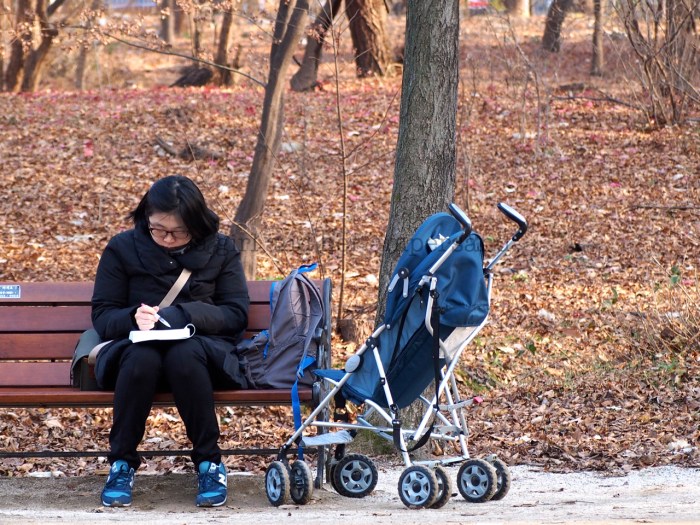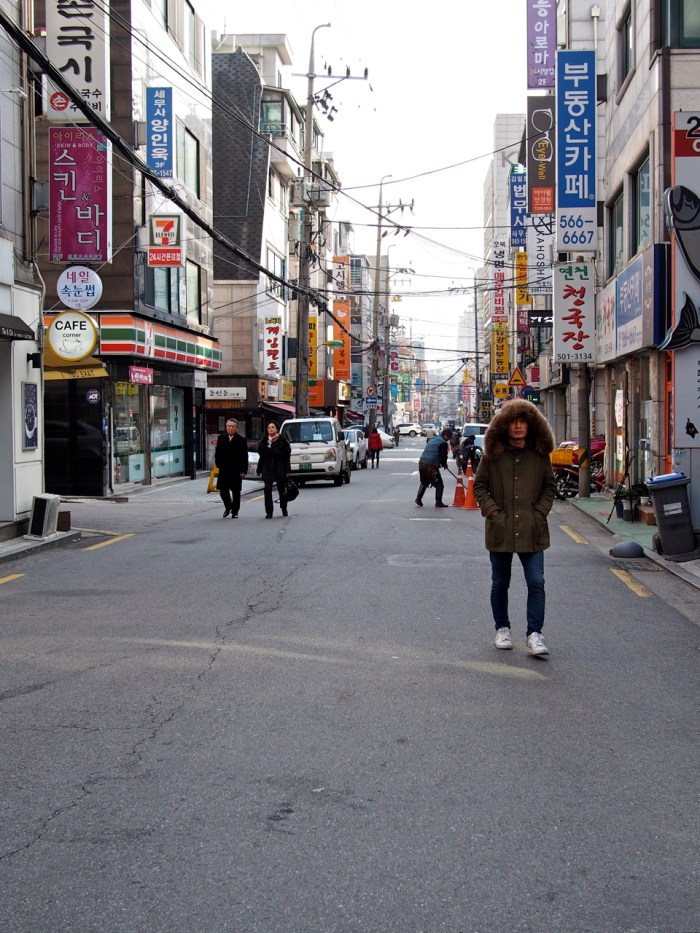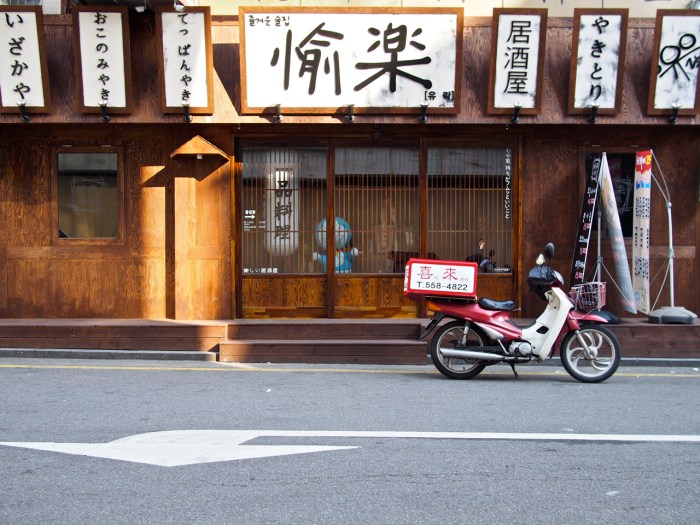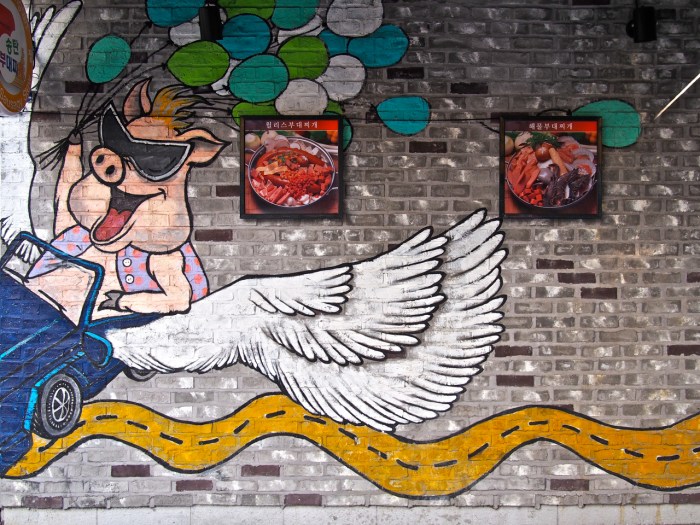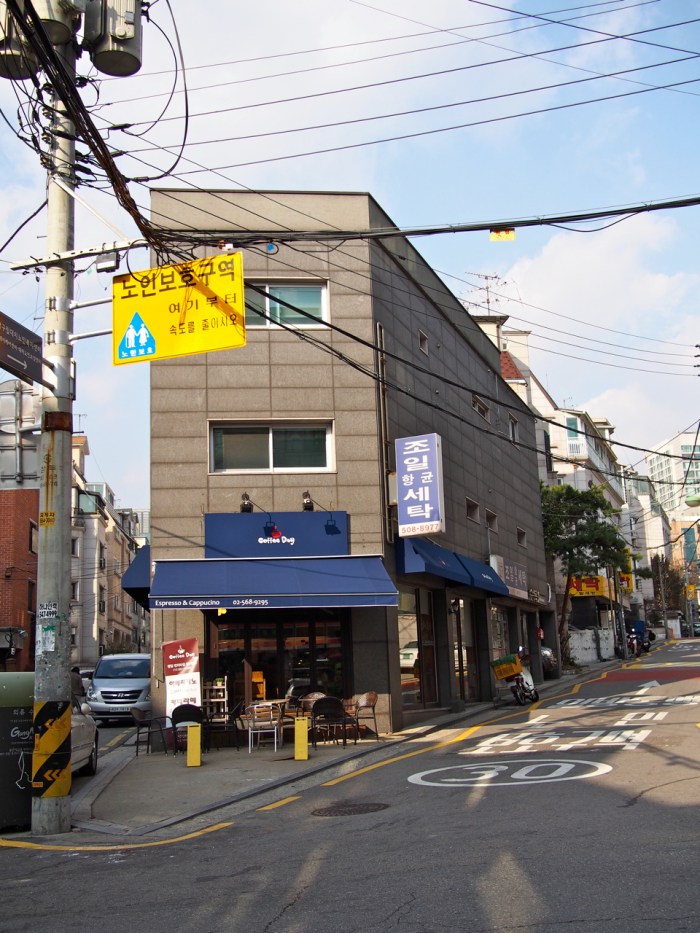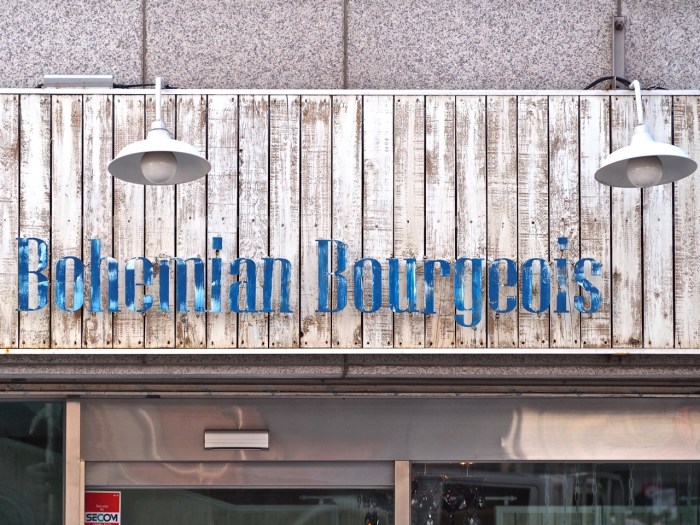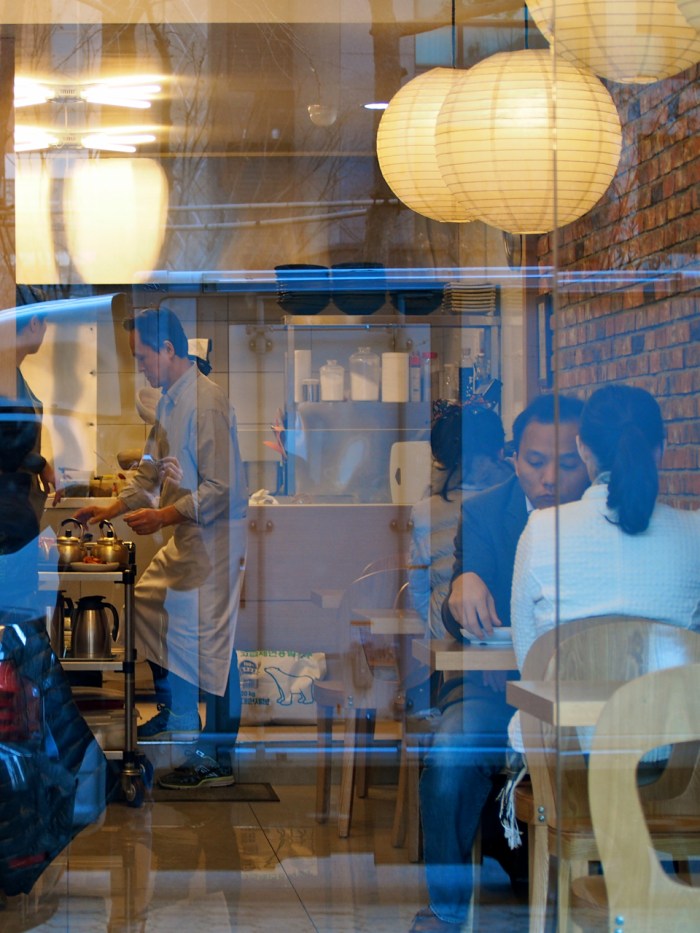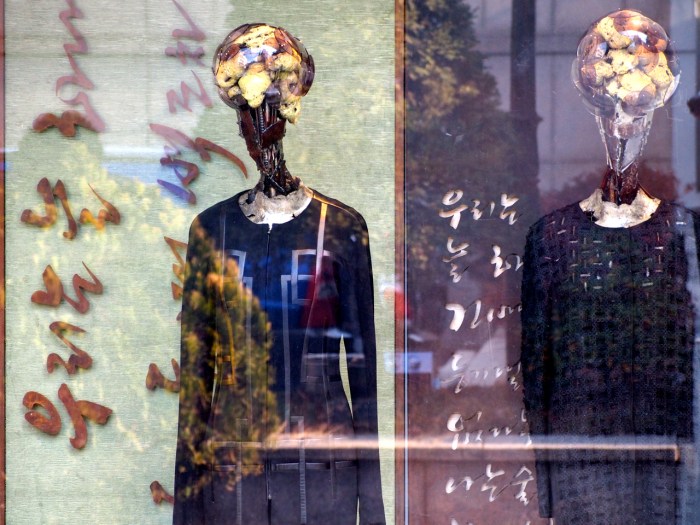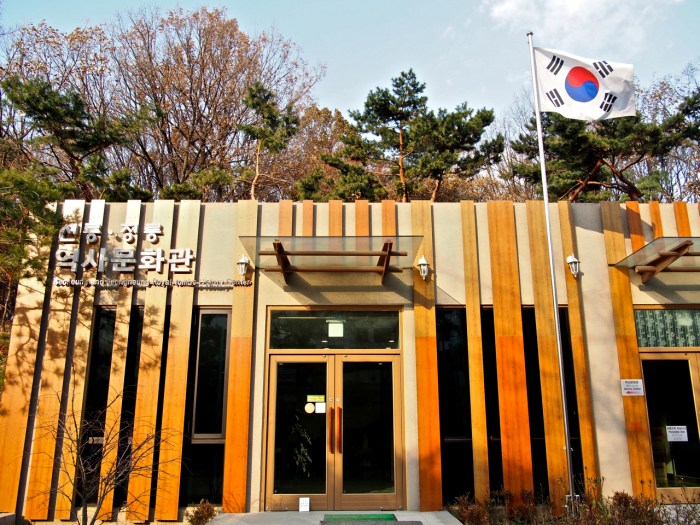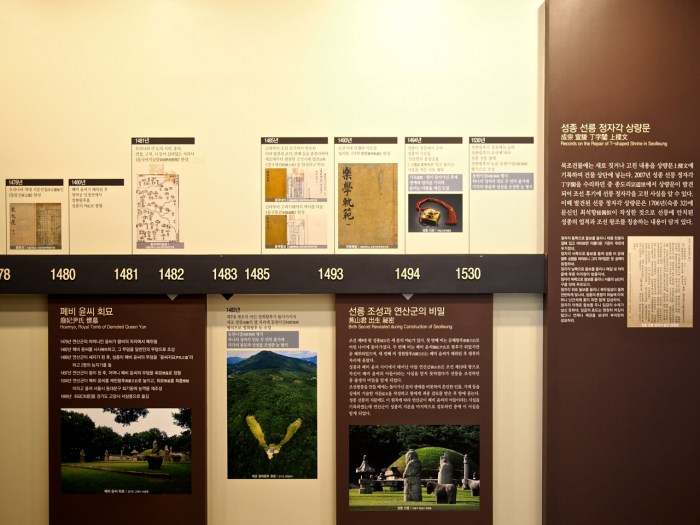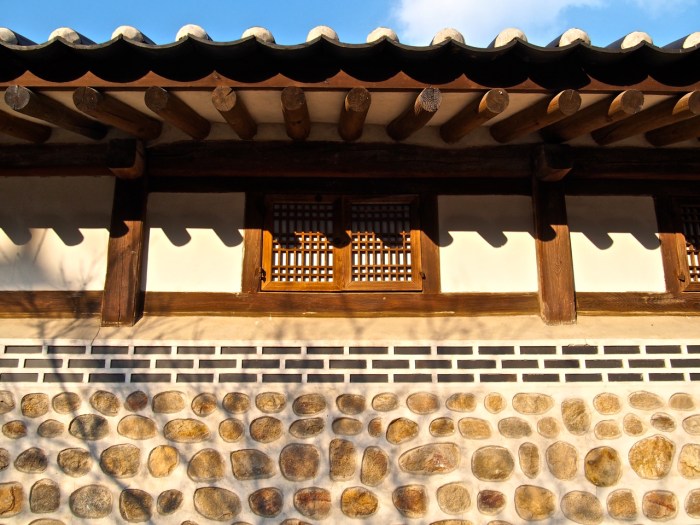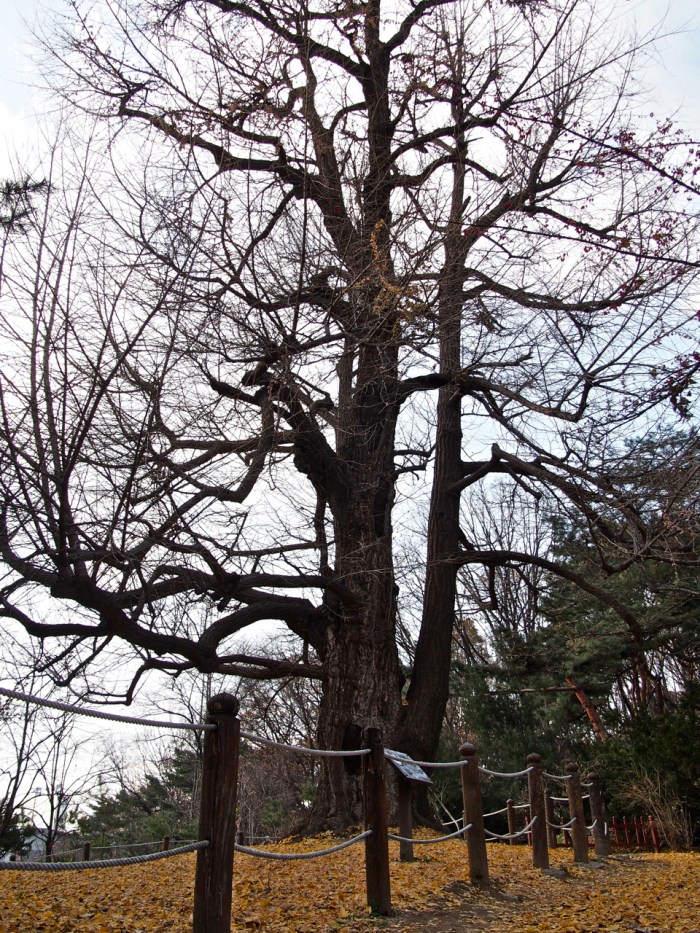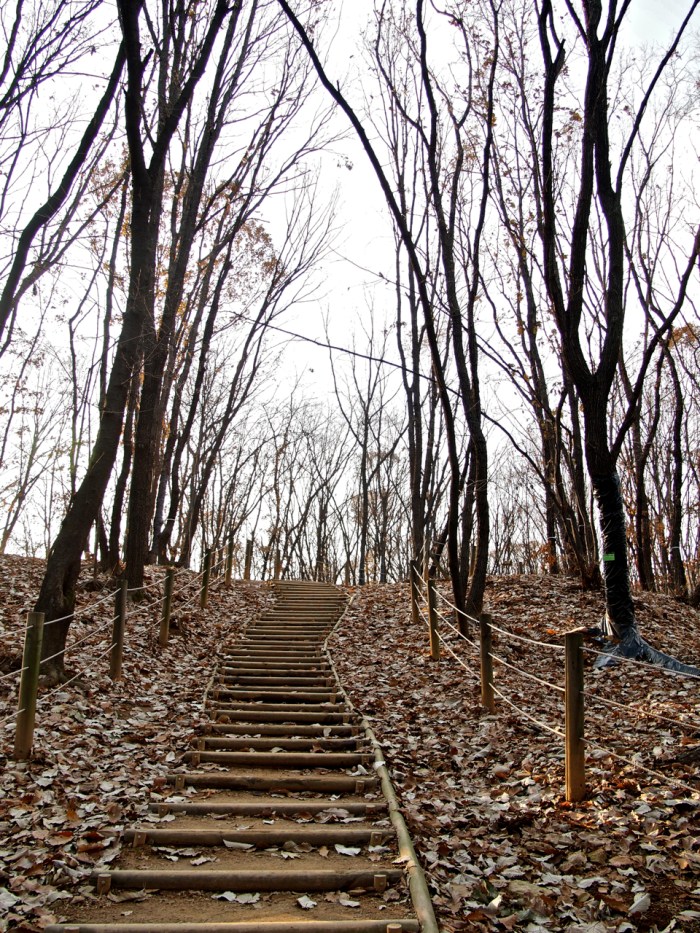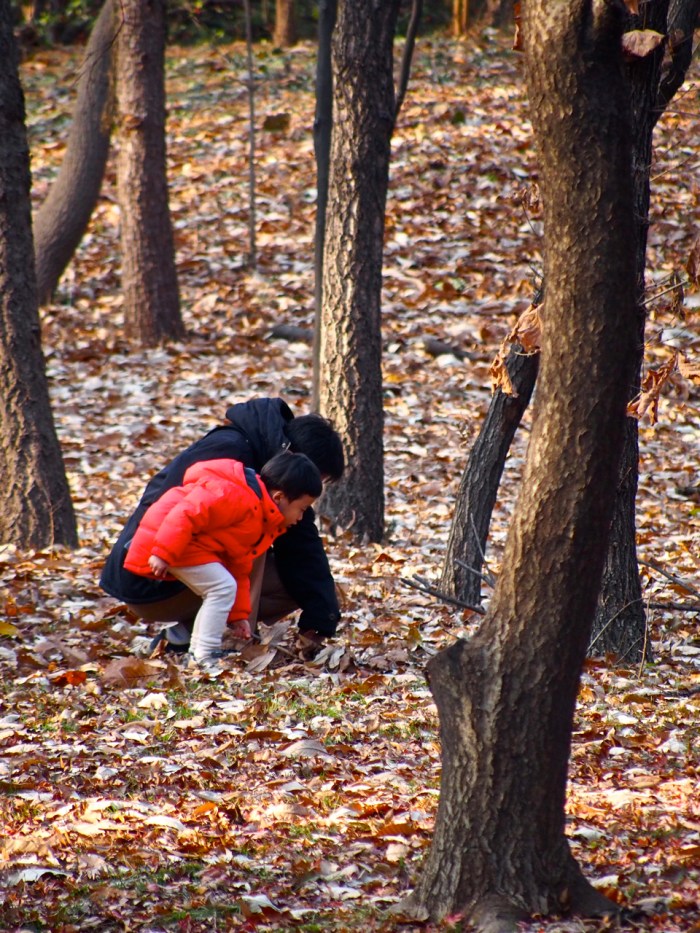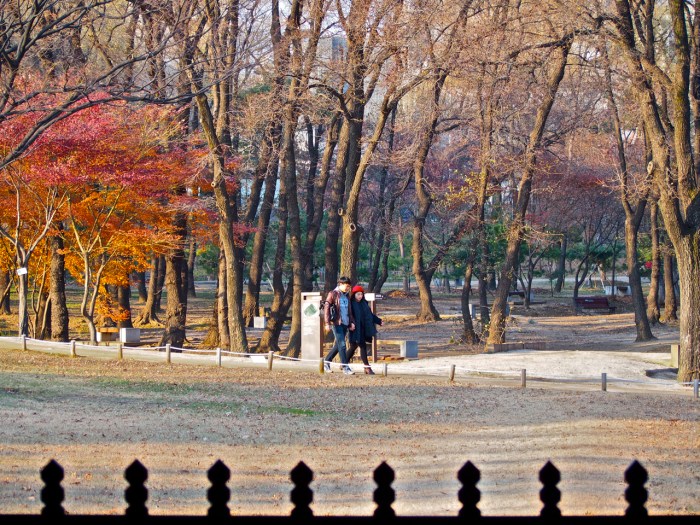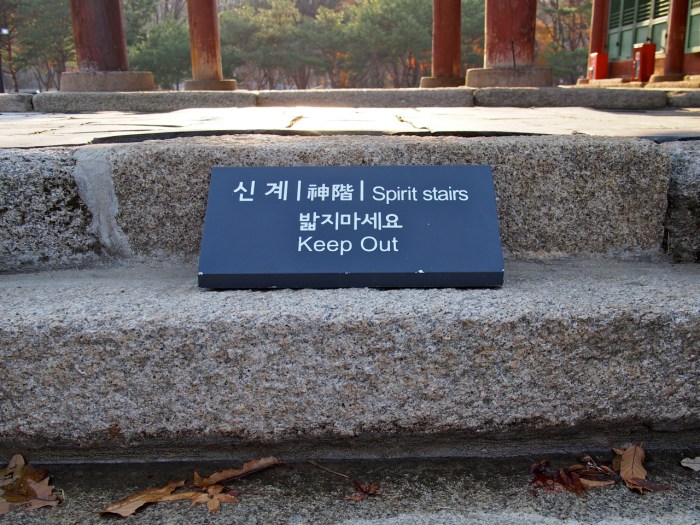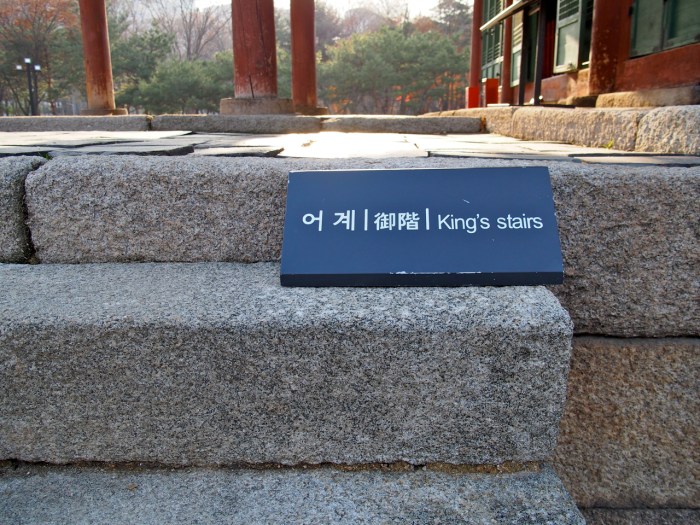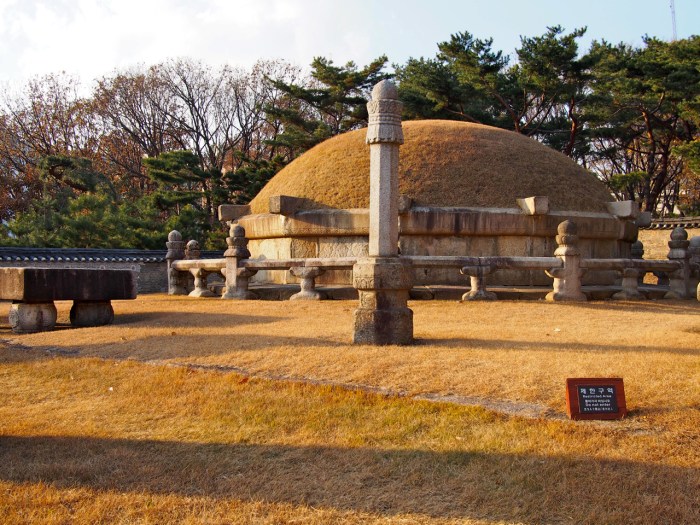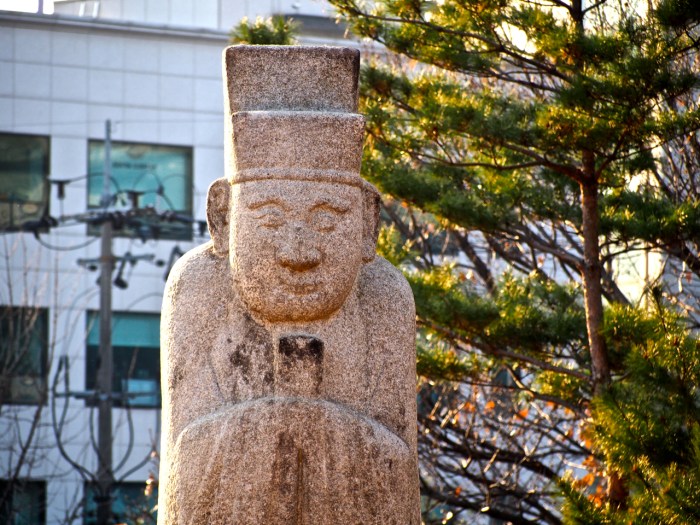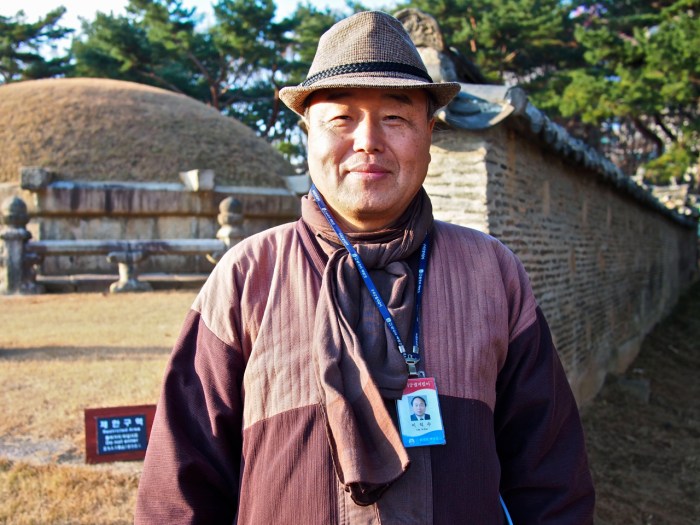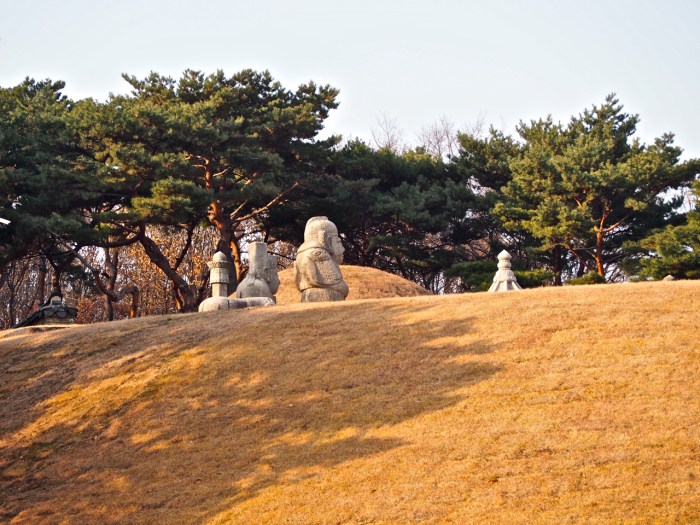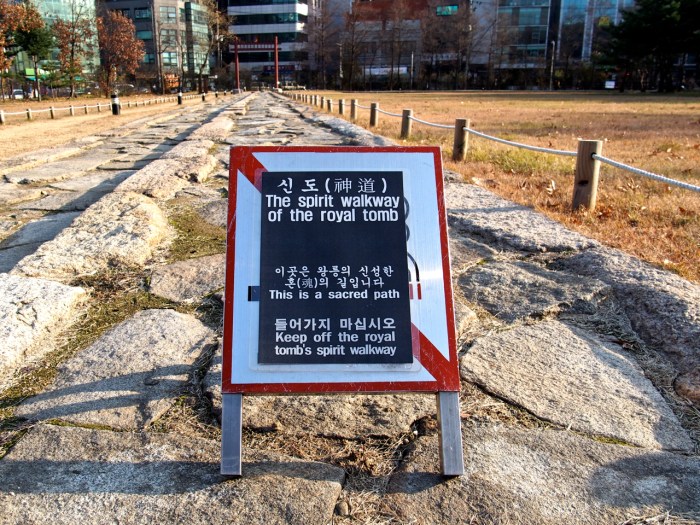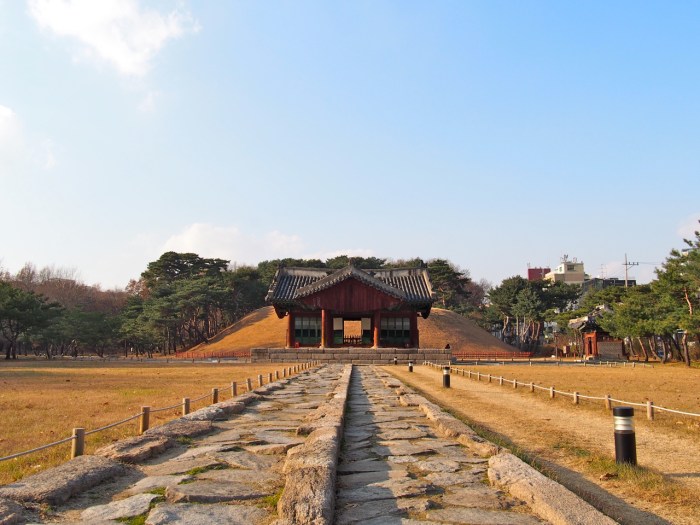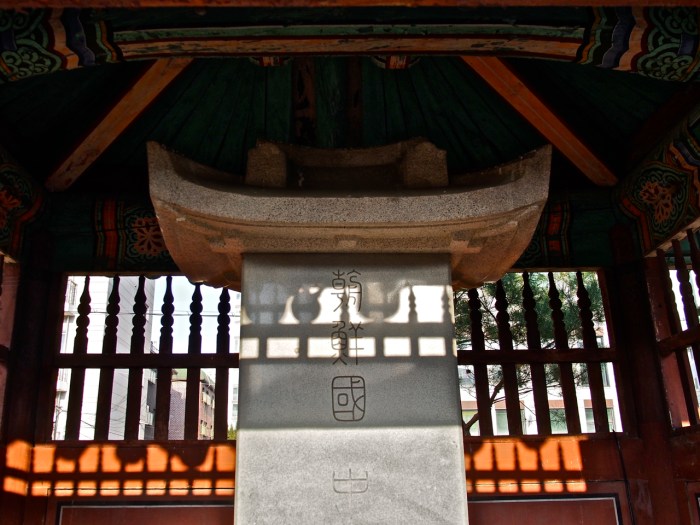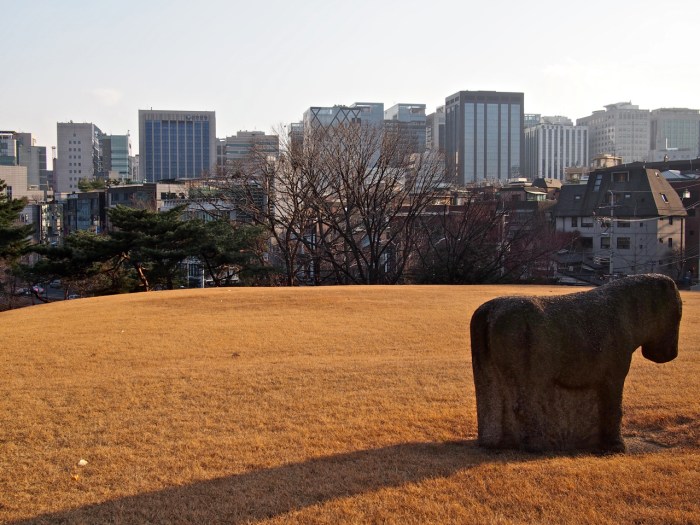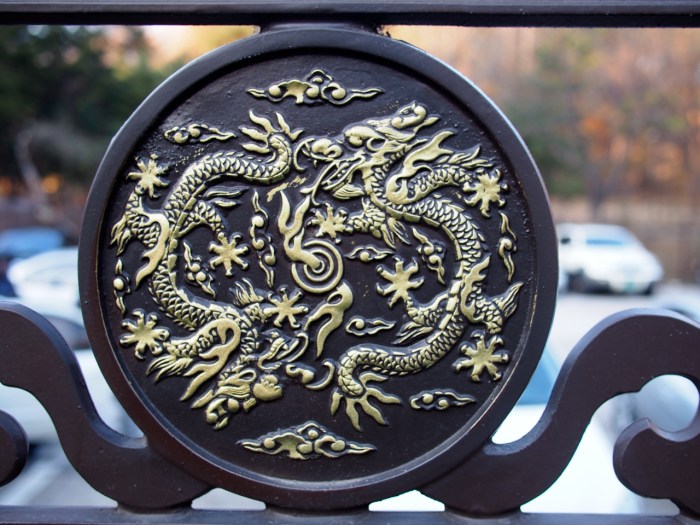Wind blustered down the wide, straight avenues between office towers, flapping the ties of the men in business suits as they made their way back to their desks, coffee cups in hand. Their routes took them past makeup shops and restaurants, past a new tea café where someone wearing a fuzzy black ball on their head did promotion, past a steak place called Buenos Aires that advertised nightly live tango shows, even though its interior, with two guys in matching polo shirts behind the counter’s cash register, looked more lunch joint than dinner club. Teheran-ro (테헤란로), running east-west between COEX and Gangnam was lined with glassy skyscrapers housing banks, insurance companies, and investment funds. The corridors of power soundtrack of hard soles on marble floors didn’t echo quite as loudly here as it does on Yeouido, but the sense of serious business was palpable in both the wind-tossed ties of the salarymen and the crisp rectangles and triangles of the edifices behind them.
In the backstreets off Seolleung-ro (선릉로) restaurants, bars, cafes, noraebangs, and pool halls waited for those same salarymen to clock out and make their way to the office hwaysik or to blow off some steam and complain about work over bottles of beer. One of these backstreets, Seolleung-ro-86-gil (선릉로86길), is known as Daechi Food Street (대치베스트 맛의거리) and is the second left out of Exit 2. The street caters to the area’s office workers but the clientele here tips ever so slightly to the neighborhood’s full-time residents. Restaurants run the gamut from barbecue to sushi to yukgaejang kalguksu.
To the south, Daechi Food Street is backed by mostly four- and five-story apartment buildings, mixed with small businesses: an upscale grain store selling rice and beans, salons, chic lighting stores, an oriental medicine hospital with a giant smiling cartoon stomach next to the entrance. West of Seolleung-ro, new complexes of apartment towers took up nearly all the neighborhood’s real estate, giving way only to an elementary school that was just letting out when I passed by. Next to the clear trash bags full of fallen leaves that lined the street at regular intervals were moms, a smattering of dads, and even a couple taekwondo instructors waiting for their kids.
Rounding out the Gangnam fabric with a touch of cultural refinement was the Lie Sang Bong shop, left on Seolleung-ro-99-gil (선릉로99길) from Exit 7. Now based in Paris, Lie is one of Korea’s most famous and accomplished designers, having dressed celebrities from Juliette Binoche to Lady Gaga, and collaborated on projects ranging from costume direction to PC design. I was surprised to find the store here, on an otherwise nondescript side street, away from foot traffic, but then again exclusivity and being in the know are half the appeal of haute couture. The shop featured a front window where a trio of mannequins wore pieces by Lie. As striking as the clothes were, though, I found the mannequins equally interesting; made of deep and splotchy metal, they had alien-esque heads that were topped by spheres of clear plastic discs holding lava rocks, looking rather brainy.
In nearly every way the area seems a paragon of the new Seoul, the one built over the last thirty years, and not a place that harbors a close connection to the deep past. But in fact the neighborhood’s biggest feature does just that.
It’s not immediately obvious when you step out the station, but a few minutes’ walk from Exit 8 is Samneung Park (삼릉공원), which takes up several city blocks and is the site of Seolleung and Jeongneung Tombs, where Kings Seongjong and Jungjong, respectively, are buried. The park is Historical Site No. 199, but the Royal Tombs of the Joseon Dynasty are also collectively recognized as a UNESCO World Heritage Site, having been added to the list in 2009. According to the park’s brochure there are forty-two neung (릉), or tombs of Joseon kings or queens, on the peninsula, all but two of which are in South Korea, scattered throughout Seoul and Gyeonggi-do, though the ones here are some of the most accessible.
Visitors to Samneung Park first come to a small Royal Tombs History Center (역사문화관). There’s almost no English information here, but the center is staffed by cheerful guys in hanbok, which is pretty charming. Even if your Korean isn’t good enough to make it through all the historical information it’s worth stopping in to spend a few minutes watching the rather fascinating video that shows the step-by-step process of how the tombs were constructed using pulleys and wooden rollers.
Also near the entrance is the tomb keeper’s house (재실), where tomb officials were stationed, ritual objects were stored, and the facility’s royal kitchen was housed. Those presiding over memorial rituals also stayed here in order to prepare offerings and purify their mind and body before and after ancestral rites. The building is an elegantly rustic wooden structure whose simplicity sets off the beauty of the surrounding trees, which were blazing red and gold when I visited.
Between the history center and tomb keeper’s house is a 500-year-old gingko tree. 24 meters tall and 5 ½ meters around it twisted upwards in the meandering way that gingkos have, while underneath it the ground was a thick carpet of fallen yellow leaves.
In fact, Samneung’s greatest beauty is probably not the tombs themselves, which only occupy perhaps ten percent of the park, but the nature surrounding them. Whatever land isn’t taken up by the tombs or park facilities is occupied by thickly forested slopes. These are crisscrossed by walking paths and can sometimes be so quiet that the only sound is the prattle of magpies and the leaves underfoot. Wandering through the grounds, as a friend remarked, has the feeling of meandering through the ancient Silla capital of Gyeongju. Cherry blossoms bloom in spring, cosmos in summer, some of the city’s best fall foliage appears in autumn, and winter leaves the grounds a starkly pure still life of snow, wood, and stone.
The park’s burial sites are divided between Jeongneung to the east and Seolleung to the west. Seolleung (선릉), is further divided into the Tombs of King Seongjong (성종대왕릉) and the Tomb of Queen Jeonghyeon (정현왕후릉), the king’s third consort.
Seongjong was the ninth king of Joseon (1457-1494), taking the throne at age 12 and holding it until his death at age 37. Despite being a young king, his rule was marked by peace, prosperity, and the production of the경국대전 (Gyeonggukdaejeon), the Grand Code of State Administration, Joseon’s main statute, according to the Cultural Heritage Administration (문화재청). He was buried here in 1495, his queen nearby in 1530.
Seolleung follows the characteristic pattern of Joseon royal burial sites, with a two-tier stone path leading from a red spiked entrance gate to the main shrine. The path’s lower tier was for the current king, while the upper tier was reserved for spirits. At the end of the path was the T-shaped main shrine, empty save for a few crimson tables and benches that are used for the memorial rites performed every 24th day of the 12th month of the lunar calendar. Outside a small plaque displayed and explained what’s prepared for the rite.
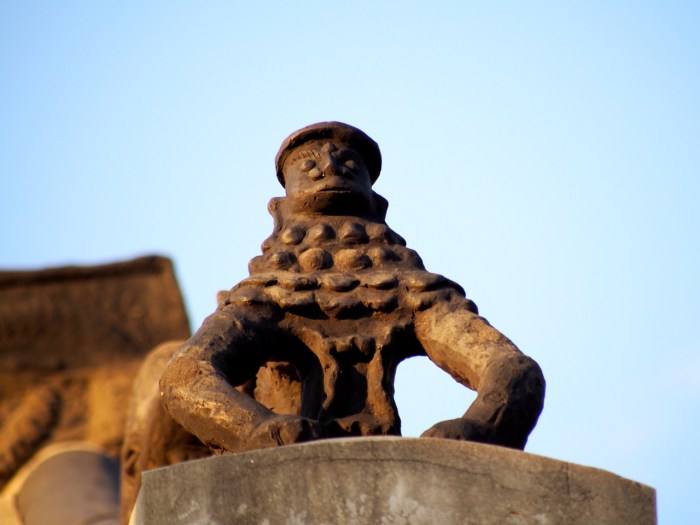
Near the shrine was a guards’ house and stele shed and behind and slightly askew was the flat-topped slope on which the actual burial mound rested. Just off to the side a small path led up to the top of the hill and a small viewing area where visitors can get a closer look at the tomb. Stone military and civil officials and their horses stand guard in front of the burial mound, which is flanked by stone sheep and tigers and surrounded on three sides by a wall.
A short ways northeast of Seonjong’s tomb is that of Queen Jeonghyeon (1462-1530), which features a smaller and more modest, though similar, setup and faces west instead of south. The kings’ tombs and their approaches are in wide clearings, the better to be seen, but Jeonghyeon’s burial site is partially hidden amid a copse of pines and is, in my opinion at least, more beautiful and peaceful for it. The queen’s memorial rites occur on the 22nd day of the 8th month of the lunar calendar.
If instead of going west from the entrance you continue east past the gingko and the tomb keeper’s house you arrive at Jeongneung (정릉) the Tomb of King Jungjong (중종대왕릉), Joseon’s 11th ruler (1488-1544). Jungjong was Seonjong’s son and took the throne in 1506 after his half-brother, King Yeonsangun was dethroned in a coup. Jungjong was originally buried at Seosamneung in what is now Goyang, but eighteen years after his death his third consort, Queen Munjeong, moved his tomb to its present location, believing it to be more propitious. According to the annals of King Seonjo, however, the problem with this was that the area in front of the ceremonial pavilion flooded every rainy season and the tomb keeper was forced to use a boat to shuttle between his house and the tomb.
Jeongneung follows the same layout as Seolleung, its worship road also marked by a sign that endearingly informs visitors, ‘The spirit walkway of the royal tomb. This is a sacred path. Keep off the royal tomb’s spirit walkway.’ The main shrine was crimson with green doors and trim and a low hanging front apron. A crack at the apex of the peaked stone roof hinted at the nearly 500 years the tomb has been here. Memorial rites here take place on December 9.
Behind the shrine and a small stele shed is the large, broad hill that leads up to the burial mound. Principles of feng shui state that, ideally, a tomb should face south and have a view of mountains in the distance, so I imagine that the old dead king was as taken aback as anyone when Gangnam’s development eclipsed the distant Cheonggye-san. Now all that was visible southward from Jeongneung were the tops of Teheran-ro’s glistening office towers, but those too seemed to take the form of ridges, rising and falling like the peaks of twenty-first century massifs.
Daechi Food Street (대치베스트 맛의거리)
Exit 2
Left on Seolleung-ro-86-gil (선릉로86길)
Lie Sang Bong shop
Exit 7
Left on Seolleung-ro-99-gil (선릉로99길)
Samneung Park (삼릉공원)
Exit 8
North on Seolleung-ro (선릉로)
02) 568-1291
Hours | March – October: 6:00 – 21:00; November – February: 6:30 – 21:00; Closed Mondays
Admission | Adults: 1,000; Kids age 7-18: 500
